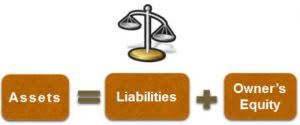
Businesses must once again adapt to another shift with the passage of AB2257. The primary method is to consider every piece of information in a case that helps to decide the extent to which the taxpayer does or does not retain the right to control the worker. → You can make an unlimited amount of legitimate tax deductions, but you must keep good records of those purchases in case of an IRS audit.
Personal income tax deadline
This includes advising on the most tax-efficient business structures, optimizing expense reporting, and exploring opportunities for tax deferral. By optimizing tax strategies, contractors can enhance their financial performance and achieve greater profitability. Tax projections are a vital component of financial planning for independent contractors. They provide a forward-looking view of potential tax liabilities, allowing contractors to plan their finances effectively. By estimating future tax obligations, independent contractors can set aside the necessary funds and avoid unexpected tax bills.

Independent Contractor Taxes: A Complete Guide for 2025
Are you still wondering about your tax obligations as an independent contractor? Instead of getting a W-2 with taxes already withheld, you’ll receive a Form 1099-NEC from your clients showing Law Firm Accounts Receivable Management how much they paid you—without any taxes taken out. This may influence which products we review and write about (and where those products appear on the site), but it in no way affects our recommendations or advice, which are grounded in thousands of hours of research. Our partners cannot pay us to guarantee favorable reviews of their products or services. Need professional help with a specific tax issue or have general tax questions?
- To determine your tax obligations as an independent contractor, start by calculating 15.3% of your annual income for self-employment taxes (for Medicare and Social Security taxes).
- Additionally, check if the CPA is a member of specialized sections or centers within the AICPA for added reliability.
- For the 2024 tax year, there’s a limit to how much of your earnings are subject to the Social Security tax, known as the Social Security wage cap.
- And while most of the independent contractors choose sole-proprietorship, others opt to establish their own LLC or S-Corp.
- Independent contractors navigate a unique financial terrain, markedly different from traditional employees.
- Being able to work for multiple employers and providing one’s own tools may indicate IC status.
- Tax planning and compliance are critical for independent contractors, who often face complex income tax situations.
How can a CPA help with identifying eligible deductions?
- You should consult your own legal, tax or accounting advisors before engaging in any transaction.
- But you’ll want to spend time estimating this because if you underpay your estimated taxes, you could be subject to penalties.
- Professionals can identify overlooked deductions, ensure compliance, and offer guidance on tax planning for future years.
- This requires making quarterly estimated tax payments to cover income and self-employment taxes.
- After we’re done with the steps above, it’s time to double check the figures.
- In determining whether the person providing service is an employee or an independent contractor, all information that provides evidence of the degree of control and independence must be considered.
Some publications and tax form instructions are available in HTML format and can be translated. Visit our Forms and Publications search tool for a list of tax forms, instructions, and publications, and their available formats. The sticking point for many accounting and bookkeeping firms is going to be point B.

Employee Tax – Independent Contractor

By analyzing various business structures, CPAs provide valuable insights into the pros and cons of each option, helping contractors make informed decisions. Overall, tax projections are an essential tool for independent contractors, providing a clear picture of their financial future and enabling them to navigate the complexities of self-employment taxes with confidence. Furthermore, a properly organized COA facilitates the preparation of financial ledger account statements, enabling contractors to monitor their net profit, cash flow, and overall financial performance.
The Complete Guide to Independent Contractor Taxes
Proper planning and documentation of business expenses can help minimize your taxable income. While federal taxes are often the primary focus, many states and municipalities also require independent contractors to pay income taxes, business taxes, or other fees based on where they live and work. Form 1099-NEC (Nonemployee Compensation) is one of the most important documents for independent contractors. This form is used by clients to report payments of $600 or more made to cpa for independent contractor you during the tax year.

- This means that those without an active in-state license are subject to the ABC test, outlined above.
- Taxfyle connects you to a licensed CPA or EA who can take time-consuming bookkeeping work off your hands.
- Janet Berry-Johnson, CPA, is a freelance writer with a background in accounting and income tax planning and preparation for individuals and small businesses.
- For more information about the tax and accounting services we provide, visit our Home Page!
- A CPA ensures accuracy in these records by properly documenting every transaction, aiding in tax compliance and avoiding legal issues.
- Janet has been nominated as a top Woman in Accounting by Practice Ignition and honored as a Top 100 Innovative Women in Tax by Canopy Tax.
Independent contractors need CPA services to navigate complex financial challenges, ensuring accurate record-keeping and compliance with tax laws while receiving expert tax advice tailored to their unique situation. With expert representation, contractors can navigate the complexities of tax compliance with ease and assurance. Furthermore, CPAs offer ongoing advisory services to help contractors stay updated with changes in tax laws and regulations. This proactive approach enables contractors to adjust their tax strategies accordingly, minimizing risks and maximizing opportunities for savings.







